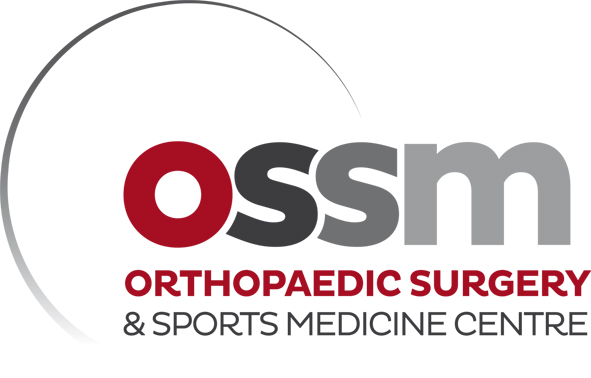Arthroscopy of the Knee
1. Usually arthroscopy is a day surgery procedure with most patients going home after a few hours.
2. What Does Arthroscope mean ? An arthroscope is a small camera and lens that is inserted via keyholes into the knee to visualize the joint. Arthroscopy is the operation during which the arthroscope is inserted.
3. Why Have An Arthroscopy ? The most common reasons to have an arthroscopy are to repair or shave a meniscal tear, to remove loose bodies from the joint, to stabilize an articular surface lesion, ie. marrow stimulation, to reconstruct a ligament, or to remove scar tissue.
4. What Are The Risks? Arthroscopy is generally a very low or low risk procedure. Complications are uncommon or rare. Blood clots in the legs or lungs are uncommon but we ask that you take aspirin for three weeks after the procedure to decrease the risk. Numbness around the keyhole incisions is common and usually goes away with time. Permanent altered skin sensation is rare. Infection is rare, about 1 in 5000 risk, but to decrease the risk, you will be given antibiotics just prior to surgery. Stress fractures can rarely occur with meniscal tears prior or after surgery. If you suffer a stress fracture, it will usually heal by using crutches. The biggest problem after an arthroscopy for a meniscal tear is that the associated osteoarthritis causes continued aching or pain.
5. How Long Will I Be Off Work ? It depends on your type of work and the extent of the surgery. If you work in an office and just have a meniscal shave, then you will be off about a week. If you are a tradesmen or similarly heavy occupation, you will be off work 2-3 weeks. IfDr Vertullo repairs your meniscus, you will need brace & crutches for about a month.
6. Do I Need Physiotherapy After The Surgery ? Yes, physio is very helpful to strengthen weak muscles, stretch tight ones and improve your gait after the surgery. Concentrate on stretching the hamstrings, gastrocnemius and the ITB. Dr Vertullo suggests you go 1 week after the surgery, once or twice.
7. Will I Need Pain Relief Tablets ? After a standard arthroscope, most patients just require one night of moderately strong tablets such as a Panadeine Forte or Capadex and some anti-inflammatories for a few days. Beware of side effects such as nausea, constipation, drowsiness and gastric irritation.
8. What Is The Success Rate After Surgery ? In general, success depends on the problem being treated. The worse the pre-existing osteoarthritis, the more likelihood of some ongoing pain. If osteoarthritis is the dominant problem, arthroscopy offers no benefit. Meniscal repair has a success rate of 85%. That means 15% of patients will re-tear their meniscus and need further surgery.
Rehabilitation
After standard arthroscopy, such as for menisectomy, ice the knee for 24 hours, 20 minutes on, 20 minutes off. Rest & elevation is very important for at least 3-4 days. Start riding an exercise bike three to fours days after the surgery, for 5-10 minutes, increasing as able. If you develop increasing pain or swelling of the knee or calf, you should notify Dr Vertullo’s Nurse ASAP.
Rehabilitation after a marrow stimulation procedure differs in that knee motion is encouraged to allow scar cartilage to form in the defect . Start riding a bike on day 2 for 5-10 minutes/ 4 time per day. If the damaged area is large, you may require crutches for a three- four weeks.
Rehabilitation for a meniscal repair is all about letting the tear heal by minimizing motion:
1. Week 0-2: Weight Bearing on Crutches & Brace as pain requires
2. Week 2-6 Full Weight Bearing as able. Avoid deep flexion.
3. Week 6 + Full Weight Bearing with No Brace. Avoid loading flexion such as squatting or climbing. No running till 4 months. You may require a repeat MRI to check on healing before return to sport.

